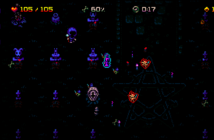
The “Metal Gear” franchise, brainchild of video game designer and director Hideo Kojima, may have finally come to its dramatic end. “Metal Gear Solid V: The Phantom Pain,” developed by Kojima Productions and published by Konami, is credited as the final game in the popular stealth franchise. Promising true, open world espionage action, “The Phantom Pain” allows for players to plan and execute their own stealth adventures. The game, released on Sept. 1, is available for the PlayStation 4, Xbox One, PlayStation 3, Xbox 360, and PC platforms.
“The Phantom Pain” takes place nine years after “Metal Gear Solid V: Ground Zeroes,” the separately released prologue to “The Phantom Pain.” Players control Big Boss, commander of the former military nation “Militaires Sans Frontières” (French for “An Army Without Borders”), who has just awoken from a coma as the result of a secret attack on his army. Now with a missing arm, shrapnel embedded in his brain, and the loss his comrades weighing him down emotionally, Big Boss, now known as “Venom Snake,” must venture out into the field again, regain his skills, rebuild his army, and embark on a quest of pure vengeance against the forces who took everything from him.
Gameplay in “The Phantom Pain” excels. Players are allowed to freely explore two massive, open world environments – an Afghanistan desert and Central Africa – during the course of the story. In these open worlds, the player is free to do anything he/she pleases; if the player sees a base in the distance, the player can travel there. If the player sees some plants, he/she can scavenge them for materials. If the player sees a prisoner about to be executed by an enemy soldier, the player can save the prisoner. Nothing is scripted, or predetermined to happen, in most cases, allowing for true freedom in the game, similar to other open world games such as “Grand Theft Auto V” and “The Witcher III.”
The open world also allows players to become creative in their infiltration techniques. If, for example, a player sees a truck heading to his/her objective, the player can tail the truck, climb into it, and be taken to the objective unseen. Or, if the player wishes, he/she could run into that same enemy base, guns blazing, and leave no one alive. The openness of the gameplay allows players to truly make their infiltration experience their own – a concept that is sorely missing from most games in recent memory.
Another new aspect to the franchise is the game’s dynamic time and weather system, which allows for varying organic benefits and detriments to gameplay. Infiltrating during the day makes it easier for enemies to see the player, but easier for the player to see them. If the player wishes, he/she can wait until the sun sets to sneak under the guise of darkness, when security is more lax. In Afghanistan, randomly occurring sandstorms may impede the enemies’ sight. In Africa, thunderstorms muffle the player’s footsteps. Any of these events can happen at any time, making each mission, trip, infiltration, and exfiltration a completely different experience. This is a departure from older “Metal Gear” titles, which usually confined the player to a single timeframe, with a single type of weather. It’s a welcome change that makes the game world feel very alive.
In addition, the game’s AI, or artificial intelligence, will dynamically adapt to the player’s playstyle. Perform too many headshots, and guards will start wearing helmets. Infiltrate too often at night, and guards will start using night vision goggles. Adaptability is key in “The Phantom Pain,” allowing multiple playstyles to be used.
The game’s central hub – Mother Base – is the main base of operations for the player. This ever-expanding base can be fully customized, allowing players to choose the color, emblem, and soldiers of their army. As the player progresses and more soldiers are recruited, Mother Base will expand.
Mother Base can perform a variety of functions, such as the research and development of new weapons, items, and uniforms, and the dispatchment of soldiers to conflict zones around the world as a source of income. Income in the game – represented as GMP (Gross Military Product) points, are used to perform these functions, and can be earned by completing various tasks in the game, such as completing missions.
Venom Snake has many new abilities at his disposal. In addition to being able to pilot vehicles for the first time in the franchise, Big Boss is able to use his new bionic arm for a variety of tasks, including climbing cracked surfaces, enhancing his close-quarters-combat attacks, and creating distracting noises to lure enemies. Through research and development, the player can upgrade the bionic arm further. One upgrade, for instance, allows Big Boss to fire his bionic arm as a controllable, rocket-propelled projectile at enemies.
The controls of the game are more accessible than previous entries in the franchise, combining elements of many third-person games of this generation with classic “Metal Gear” control schemes. The result is a fluid, almost buttery-smooth gameplay experience.
“The Phantom Pain” is a technical marvel. The Fox Engine, the game’s graphics engine, allows the game to be run at 1080p resolution and at 60 frames per second (on consoles), allowing for fluid animations in game assets. The sound design is extremely realistic, the music direction is emotional, powerful, and memorable, and the graphic fidelity of the game is top-notch. “The Phantom Pain” has arguably some of the most beautiful lighting effects in any game to date.
Facial animations and character movements are true-to-life, and the voice acting in the game is also outstanding; for the most part. Kiefer Sutherland does a fantastic job as a war-torn and emotionally strained Big Boss; Robin Atkin Downes performs superbly as the revenge-driven Kazuhira Miller; and Stefanie Joosten convinces players to fall in love with the super-powered heroine Quiet. Troy Baker, the new voice actor for Revolver Ocelot, however, is unable to capture the true essence of Ocelot’s enigmatic nature. His performance, while excellent, consists of an uncharacteristic southern accent for the character, an unfamiliarity for fans.
Story-wise, “The Phantom Pain” is a satisfying send-off to the “Metal Gear” franchise. The game’s ending will leave players in shock, but will answer many fans’ questions about Big Boss. It is an emotional, dark, and compelling tale that touches on heavy themes, such as revenge and loss, as well as the significance of community, language, and identity.
“Metal Gear Solid V: The Phantom Pain” is worth every penny of its purchase price. It is filled to the brim with content that will keep the player coming back again and again. It’s addictive, emotional, and above all, fun; and it is a satisfying conclusion to a fan-favorite franchise. It may be the last in the “Metal Gear” franchise considering Kojima’s departure from Konami, but it is destined to always be “a shining light, even in death.” “Metal Gear Solid V: The Phantom Pain” receives a score of 5/5.





No Comments
There were more questions left than answers when I finished, just sayin’.